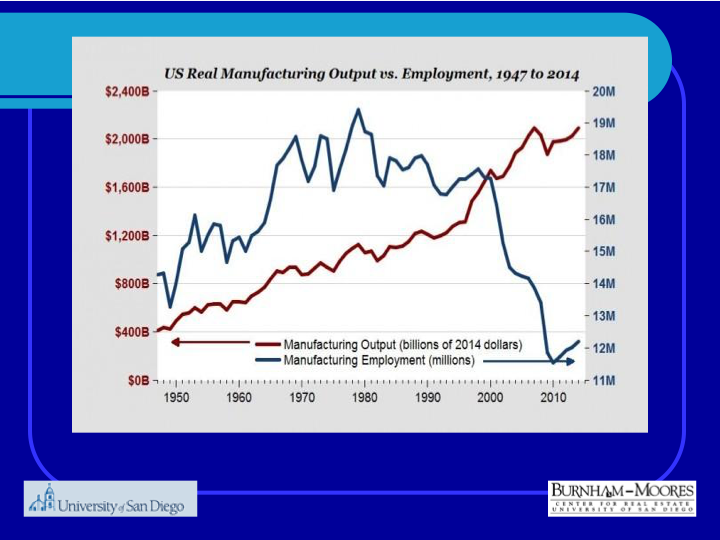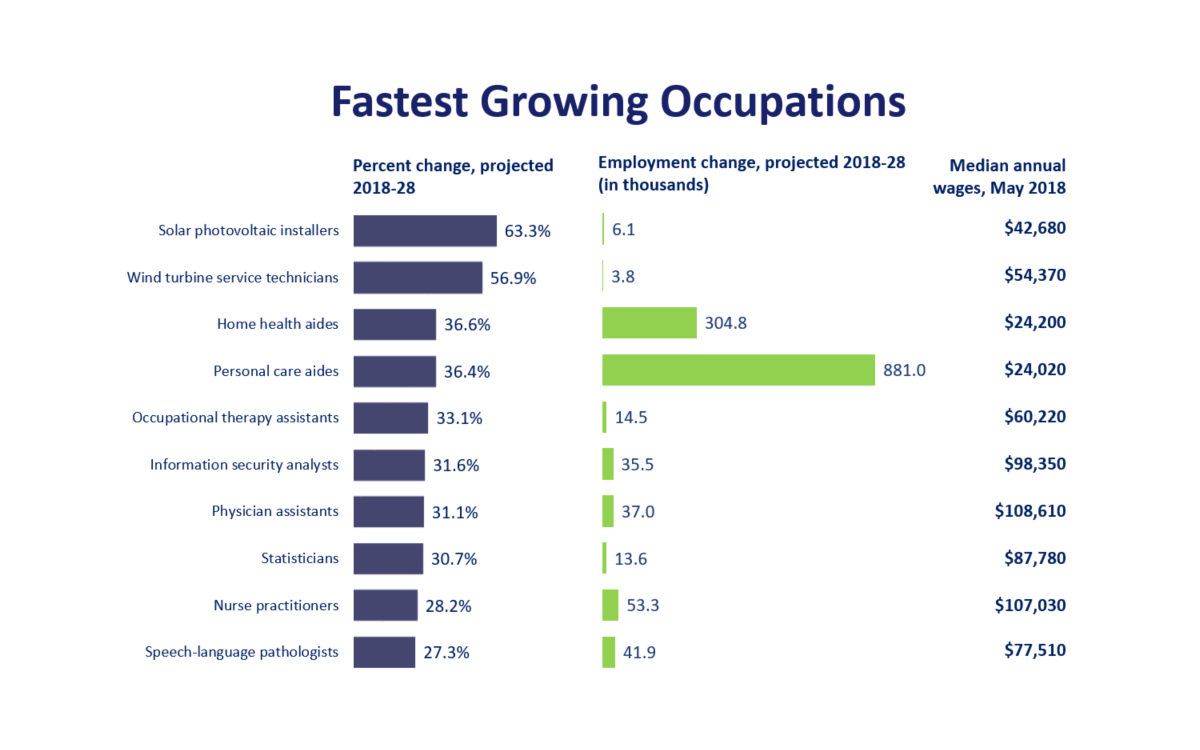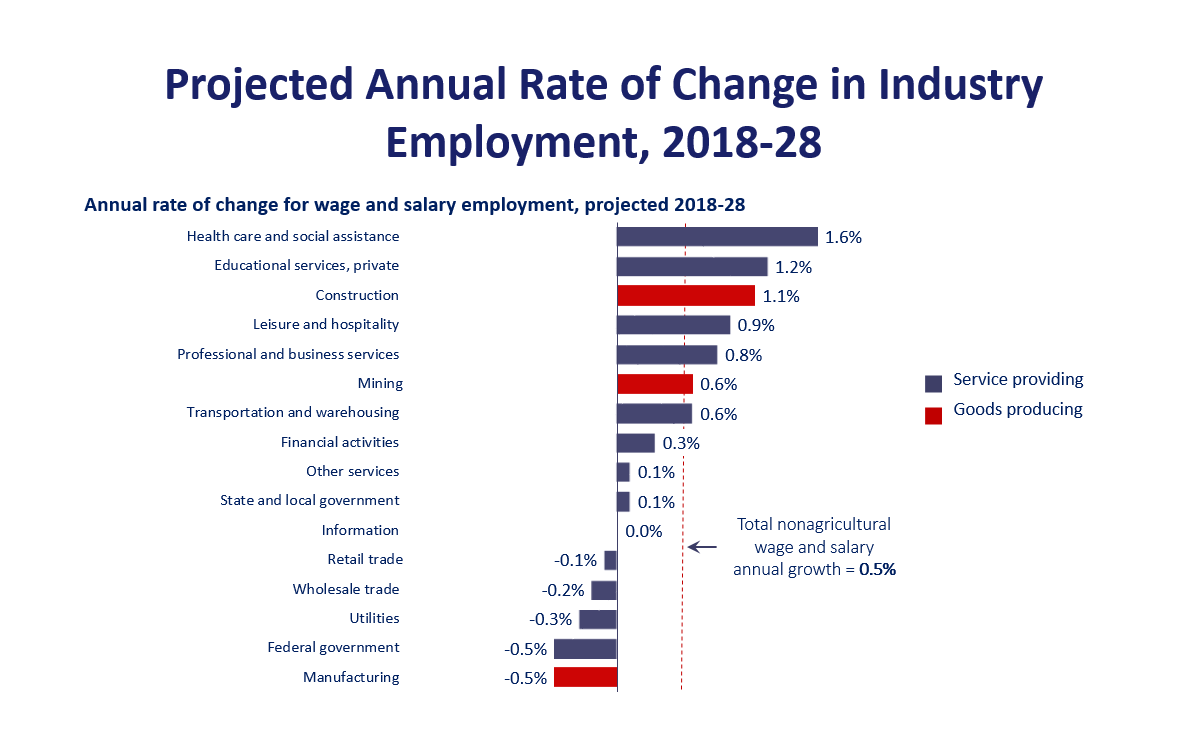In no other sector of the “post-war” economy, has the impact of automation, robotics and AI been more important than manufacturing. This is one of the factors underlying the current GM strike. Not only are jobs being lost to automation and outsourcing, the demand for more simply-assembled electronic vehicles may further reduce the need for skilled auto workers.
Real manufacturing output has grown consistently through greater productivity while total employment in this sector peaked in the late 1970s. This long term trend (1947-2014) is shown in this graph by economics professor Alan Gin:

More Jobs Being Created
Employment keeps expanding, but the allocation of jobs between sectors is changing. The bureau of labor statistics publishes an annual ten-year forecast of job growth by sector. Its latest projection https://www.bls.gov/emp/ is as follows:


Implications
The implications for credit unions serving communities or SEGs are many. The fastest growing job segments tend to be lower paying as indicated by May 2018 salaries.
Two of the fastest growing sectors are driven by the response to climate change and energy production. Higher paying jobs would appear to require more college than lower paying ones. Both wholesale and retail trades show shrinking levels of employment.
The manufacturing sector is the one industry with the highest rate of projected job decline.
Credit unions have traditionally done a good job of knowing much about their members. However, as more credit unions seek ways to have a positive impact and influence the economic direction of the communities they serve, monitoring local job trends will be increasingly critical when making loans and future infrastructure investments.

The latest date on the manufacturing sector can be found in this Washington Post article of Oct 1, 2019.
https://www.washingtonpost.com/business/2019/10/01/trump-is-heading-into-re-election-with-deep-manufacturing-recession/
Manufacturing fell into a technical recession in the first half of the year, and the latest ISM data indicates the situation appears to be getting worse.
This is a test comment to see if you get one or more email. Thanks!